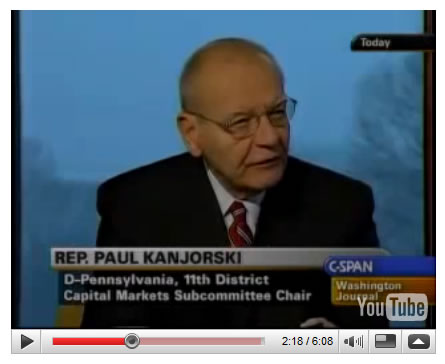UK Interest Rate Forecast 2011 - Conclusion and Implications - Part 2
Interest-Rates / UK Interest Rates Mar 08, 2011 - 02:32 AM GMTBy: Nadeem_Walayat
 This analysis continues from Part 1 Here
This analysis continues from Part 1 Here
Bank of England Remains Paralysed By Fear of Financial Armageddon
Since August 2007 when the credit crisis first broke the Bank of England has been in near perpetual state of panic, always opting to do nothing rather than something. For instance during 2008 the Bank of England should have been cutting interest rates but instead it kept them on hold at 5% as it remained paralysed by the fear of inflation right up until the world peered over the abyss at financial armageddon.
 Lehman's Bankruptcy
Lehman's Bankruptcy
The Lehman's bankruptcy irrevocably changed the financial world as within a matter of days a chain reaction of the worlds banks going bust pushed the world towards financial armageddon as the following video illustrates just how close the U.S. Financial System came towards total collapse. At 2 minutes, 20 seconds into this C-Span video clip, Rep. Paul Kanjorski of Pennsylvania in February 2009 explains how the Federal Reserve told Congress members about a "tremendous draw-down of money market accounts in the United States, to the tune of $550 billion dollars." According to Kanjorski, this electronic transfer occurred over the period of an hour and threatened a further $5 trillion to be drawn out triggering a total collapse of the Financial System, which prompted Hank Paulson's emergency $700 billion TARP bailout action.
Video Served by Youtube
Even on the brink of financial armageddon the Bank of England remained in a state of near total paralysis, it took Gordon Brown to announce the first emergency interest rate cut on October the 6th 2008 from the Prime Ministers Despatch Box rather than by the Bank of England MPC, following which the Bank of England was effectively instructed to ignore inflation and keep cutting interest rates all the way to 0.5% by March 2009 where they have remained for the past 2 years.
Why are the Banks Still Bankrupt ?
Because the banks are leveraged up to the hilt, forget X10, or X20, some banks such as Lehman's were leveraged at over 50X capital. Nothing much has changed, the exposure of UK banks as illustrated by the derivatives market is of several magnitudes greater than the total economic output of Britain, there are no if's or but's, the Bank of England remains paralysed by fear of FINANCIAL ARMAGEDDON, because there is no way that the country can cover the total exposure of Britain's banking sector without going bankrupt i.e. hyperinflation. Which is why the BoE will remain reluctant to raise interest rates for many years as well as continue to print money to funnel to the banks.
The Cost of Near Financial Armageddon
The cost to the world, just in terms of lost economic output as against where the economies were trending towards is put at £11 trillion, with the economic cost to Britain at about £250 billion, this is on top of all of the £1 trillion of bailout costs and banking sector liabilities.
Bankster's Holding a Gun to the Heads of British Tax Payers
The bankster elite are holding the tax payers of Britain hostage under the threat of financial armageddon, the fraudulent banking sector converts the tax payer funded profits into hard cash that the bankster elite pockets as bonuses.
The BoE lends the banks at 0.5% that then go off to buy government bonds (yes the greedy fools also used BoE bailout cash to buy PIIGS debt just before they started to go bust) on leverage and then the BoE prints money to buy the bonds back from the banks at 3% thus generating an instant profit in the region of 55% RISK FREE. If that is not evidence of a Bankster Elite controlling the real levers of power i.e. the ability to print money than what is ? It also explains why the banks are not lending to businesses and individuals as why should they take on the risk of lending when they can make many times that risk free.
I may be starting to sound like a broken record but Britain DOES need a government that cracks the back of the fraudulent fractional reserve banking system that would make the Bank of England redundant. Until that happens the fraud will continue which manifests itself in the twin forces of debt slavery and high real inflation (currently 6.6%). Instead the Bank of England is successfully manoeuvring itself to grab more power from Parliament with Mervyn King making worthless propaganda statements in the mainstream press.
At this point in time the only way individuals can fight against the fraud is by not borrowing and turning themselves into perpetual debt slaves for life and not depositing funds into the banks, instead invest in other asset classes such as stocks, housing, commodities etc., which whilst they may be volatile at least you will stand some chance of keeping pace with real inflation as opposed to the pittance of sub inflation TAXED interest rates that the Bankster elite throw as scraps to savers that they treat as suckers as they walk through their branch doors.
To achieve its twin policies, the Bank of England aided by he UK Treasury has been engaged in a game of smoke and mirrors to try and mask reality from the public which it cannot do so in terms of real inflation experience. First the banks required capital injections to boost their capital reserves. Then, he banks received £200 billion in QE so as to maintain capital ratios to enable them to monetize government debt at a huge profit margin, i.e. borrow at 0.5% from the Bank of England and lend to the government at 3.5%, resulting in a clear profit of 3% - leveraged by X20.
Many other smoke and mirrors are being used to brain wash the population with propaganda such as that the tax payer is sitting on a profit from bank capital injections, whilst conveniently ignoring the £100 billion+ of bad loans that have been written off that will never see the light of day again such as those at Northern Rock, and not forgetting the fact that these bad debt losses dumped onto tax payers will be claimed for by the bankrupt bailed out banks to set against future corporation taxes for many years, so the fraud on tax payers will continue to an even greater extent as tax payers finance fictitious profits that are offset by losses also covered by tax payers.
The total amount of liabilities that the government has dumped onto the backs of tax payers exceeds £1 trillion that has an economic impact valued at £60 billion per year in terms of debt servicing costs that is not being reimbursed.
UK interest Rates - As the primary purpose of the Bank of England is to protect the banking sector which effectively means to do the bidding of it's Bankster elite brethren by allowing them to generate huge artificial risk free profits, this means that the BoE will delay raising UK interest rates for as long as it possibly can resist market pressures to respond to HIGH Inflation.
Quantitative Easing
The policy of Quantitative easing that began in March 2009 has so far pumped £200 billion that contrary to the deflationistas rants of the past 2 years has contributed towards high inflation in the UK for the whole of 2010. The primary purpose of quantitative easing is to force interest rates lower across the yield curve by firstly buying government bonds from financial institutions i.e. monetization of the governments budget deficit by printing money and funneling profits onto the balance sheets of the banks. By artificially forcing interest rates lower, this pushes inflation higher and savings interest rates lower thus forces savers to spend and thus generate economic activity rather than lose the value of their savings as real inflation is far above the rate of interest being paid on savings. Whilst at the same time the Bank of England pumps out economic propaganda to the population to ignore high inflation so as to avoid a wage price spiral from taking hold i.e. losing control of high inflation as occurred during the 1970's
The bottom line is that Quantitative Easing does not benefit the real economy, the ordinary tax payers of Britain, virtually ALL of the benefits are for the bankster elite by enabling them to make huge fictitious profits that are subsequently paid out as bonuses. In fact QE has the opposite effect of that which the gullible mainstream press suggests to that of boosting the economy as the Banks are making risk free profits are therefore LESS eager to take on risk and lend to business and individuals than before. The governments are happy for QE to continue for it masks the true dire state of the countries finances as they artificially keep interest rates low, whilst at the same time pumping out phony doctored inflation indices such as the CPI which tend to be approximate HALF the real rate of inflation that the population actually suffers.
UK Interest Rates - The Bank of England's default position is to do nothing, therefore it will have to be dragged kicking and screaming by the market to raise interest rates. The bond markets have already responded to the prospects for higher market interest rates against which the Bank of England and other central banks are printing money to buy government debt to try push low interest out further along the yield curve.
Bank of England Failure to Understand Global Monetary Flows
The Bank of England appears to be stuck in time warp where they think global money flows stop at the white cliffs of dover, despite the fact that London is at the heart of the worlds financial system through which approx $1.7 trillion flows on a DAILY BASIS. US rampant money printing coupled with phony inflation statistics (Shadow states says it is at 8% instead of 1.4% official CPI), is resulting in huge flows of dollars magnified by the fractional reserve banking system, this flood of dollars is enough to send global inflation soaring, as especially developing nations fight to maintain a peg to a freefalling U.S. Dollar thus giving the illusion of currency stability. So the Bank of England instead of factoring in the impact of £200 billion of Quantitative Easing needs to factor in how much of US Fed money printing has flooded into Britain, given the inflationary trend this suggests an equivalent of another £200 billion of QE as a consequence of Fed money printing.
UK Interest Rates - The flood of liquidity is far greater than that implemented by the Bank of England, which implies a rate hike is more likely.
Global Bond Market Thirty Year Bull Market Is Over
My analysis of August 2010 correctly concluded that the global sovereign bonds bull market was about to imminently end and forecast that the surrogate for the global bond market, the US 30 Year Bond was targeting a sharp downtrend from 138 to between 120-115 by March 2011 (actual low 117 during Feb 2011)(26 Aug 2010 - Deflation Delusion Continues as Economies Trend Towards High Inflation).
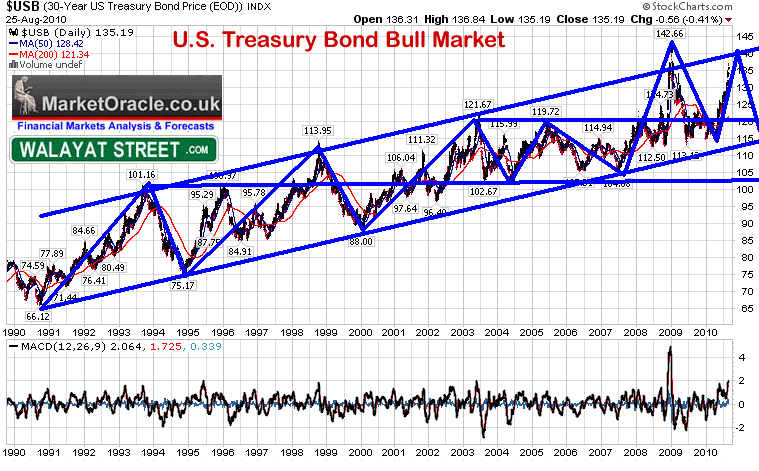
Since August 2010, the UK 10 year bench mark gilt interest rates have risen sharply from 2.8% to stand more than 1% higher at 3.85% as evidence of rising bond market interest rates in response to persistently high inflation, and continuing new supply of UK debt that will trigger demands for further QE as the Bank of England monetize's government debt so as to keep market interest rates artificially low.
The last bull market in bonds lasted 30 years, therefore I expect the bond market downtrend / yield uptrend to continue for many years if not over a decade and so far the market has done nothing to negative this long standing conclusion.
How high could yields go?
Well the long-term trend for bonds is that of a trading range i.e. US interest rates ultimately could be heading towards the 1981 peak when US interest yields hit 15% and UK government bonds tend to trade at a premium to US bonds so if US rates hit 15% UK rates could be a percent or two higher.
Whilst 15% is NOT going to happen during 2011, however this does illustrate the long-term direction of trend which will continue to put upward pressure on the base interest rate that the Bank of England is keeping artificially low when compared to the market interest rates, i.e. UK base interest rates at 0.5% ONLY SERVE the bankster elite as I have elaborated upon at length.
Why have bond investors Been Blind to the inevitable crash ?
Because most are bankster's who's only focus is the short-term so as to maximise bonus payments that are monetizing government debt by means of highly leveraged positions which is why the bankster's are making huge profits by borrowing at 0.5% from the Bank of England then buying longer dated government bonds at more than 3.5% on leverage of say X20 (usually much higher) that converts into a profit of 3% X20 = 60%! This demand has the effect of depressing gilt yields down so bond prices rise thus another 20% profit is made for every 1% rise in the bond price. Off course during a bond market crash leverage works in reverse as a mere 10% drop converts into an instant 200% loss (at X20 leverage) and another bankrupt too big to fail bank for the tax payers to step in and bailout again.
This also suggests an anomaly is possible, of high inflation with low interest rates, because the bankster elite are enticed into perpetually financing government debt at low long-term interest rates in exchange for huge profits, as what do the bankster's care if the inflation rate is at 6% and the base interest rate is 0.5% because they can buy borrow at 0.5% and buy bonds at 3.5% for a profit of 60% against an inflation cost of just 6%, this thus prevents long-term bond market interest rates from rising as is normally the case i.e. long-term interest rates are usually positive (above inflation). Which effectively means that governments are able to ROLL OVER MATURING LONG-TERM DEBT AT INTEREST RATES BELOW THE RATE OF INFLATION!!! i.e. A mechanism for Maximising debt default through high inflation! Which is the ultimate purpose of Q.E. - The consensus (academic economists) view is that governments have to roll over maturing debt at HIGHER interest rates as a consequence of HIGHER inflation.
However the interest rate risks are transferred to the currency markets and this also suggests that the risk of hyperinflation is higher as the system is geared towards perpetually increasing debt until the bubble bursts amidst an hyperinflationary panic rather than mechanisms for less severe normalisation of debt due to just high inflation but rather an hyperinflation outcome.
The bottom line is that the bond market / low interest rate bull market is over. The markets are SHOUTING HIGHER INTEREST RATES LOUD AND CLEAR. At this point in time the Bank of England is putting the Coalition Governments deficit reduction strategy in jeopardy by continuously failing to control inflation as a consequence of NEGATIVE real interest rates.
UK Interest Rates - As mentioned earlier in this article, there is no end to the amount of new debt that will be issued that will continue at above £100 billion a year for the next 5 years at least. Therefore the Bank of England will try hard to prevent interest rates from rising by buying government debt from the banks. Therefore the base rate will be kept low to keep sending signals to the bond market that the Bank wants low interest rates across the yield curve. However the bond markets are clearly putting upward pressure on market interest rates which on balance suggests a series of token rate rises this year.
Banks Still Not Lending
The reasons the banks are not lending is because they are still effectively bankrupt 3 years on from the start of the credit crisis in August 2007 when the credit markets first froze, banks continue to rebuild their balance sheets by means of borrowing cheap money from the central banks at the short-end and investing it in government bonds at the longer end thus effectively receiving money for nothing, as well as acting as a mechanism for financing the governments huge budget deficit. Of course bankster's being bankster's were not satisfied with 3% for UK 10 year bonds, so 2 years ago they viewed the higher rates of the PIIGS as even more free cash, off course now that the likes of Greece, Ireland and Portugal are destined to default, which means even more losses the banks are sitting on that means even more bailout cash from UK tax payers to cover the losses, which therefore suggests lower interest rates for much longer as the bankrupt banks remain determined to Bankrupt Britain.
The only answer is firm regulation that breaks up the banks, else the UK tax payers will be forced to keep bailing the banks out for another decade.
Most financing of corporations is via bank lending as opposed to the capital markets therefore this impacts onto corporate sector growth. Whilst the government owns large chunks of Britains banking sector however the fact that the banks are not lending continues to show that it does not control them, this continues to imply low interest rates and easy money for the banking sector to continue rebuilding their balance sheets. Perhaps the British government could learn something from China, where the government tells the chinese banks exactly how much to lend and they are expected to lend virtually exactly that amount. Instead in Britain the tail wags the dog and the government bows to the whims of the bankster elite as the politicians prep themselves for post Parliament directorships on the board of banks and financials.
Base Interest Rate / LIBOR Analysis
The below graph shows the spread between 3 Month LIBOR and the UK Base Interest rate which illustrates that the credit crisis did not just appear out of the blue in September / October 2008 but began over a year earlier in August 2007 when the interbank money markets froze as a consequence of the fictitious mark to market valuations on sliced and diced collaterised debt obligations that the banks had accumulated. Whilst the central banks began to attempt to unfreeze the credit markets through a number of increasingly desperate actions during the subsequent 12 months, however all of these measures failed which resulted in a series of credit crisis earthquakes culminating in the September 08 Lehman's bankruptcy which galvanised governments and central banks to literally throw everything they had to bring the inter bank interest rates down, which in the UK included cutting the base interest rate to virtually zero by March 2010 and pressing the monetary nuclear button of printing money and forcing the tax payers to guarantee more than £1 trillion of bad bank debt which succeeded in bringing the base rate / LIBOR spread down to within historic norms, but at huge cost to bank customers including borrowers and savers as banks are making unprecedented profit margins as illustrated by the spread between mortgage standard variable rates and LIBOR of as high 4% against historic norms of less than 1%.
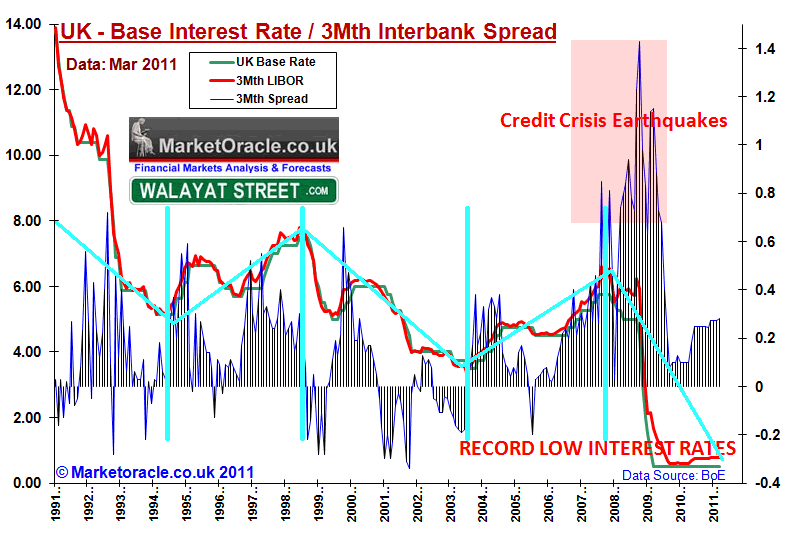
Cycles Analysis - UK Interest rate raising and cutting cycles tend to last between 3.5 and 4 years. The last peak in UK rates was in October 2007, this would put the current rate cutting cycle at 3.5 years and thus signaling that the UK base interest rate is primed to enter into a 3 to 4 year rate hiking cycle.
Cycle Target - Suggests that the soon to be starting rate hiking cycle targets a base interest rate of at least 4.5%.
Trend Analysis - Suggests the initial trend higher to 2% over the next 12 months. So if rates start to rise mid 2011 then they would target 2% by mid 2012.
UK Interest Rates - Trend analysis is clearly suggesting a series of rate rises by mid 2011 to target 2%, to be followed by several more years of rate hikes that targets a minimum rate of 4.5% by end 2014.
The Interest Rate Buffer
With the base interest rate at 0.5% there is no buffer for future rate cuts as a consequence of future crisis, therefore the Bank of England is aware that it needs to rebuild a buffer to deal with future inevitable crisis i.e. a trend towards normalisation of interest rates, the fact that it has not event started to do so is indicative of continuing paralysis at the Bank of England
Formulating an Interest Rate Forecast Conclusion for 2011
This analysis has taken some 7 weeks to complete with the final version despite being split into two halves has still had to be reduced by approx 15% to enable publishing, however all of the 22 key factors of analysis are contained within the UK Interest Rates Forecast Matrix below.
Despite all of the analysis, it would be an understatement to say that it has been difficult to arrive arrive at a forecast conclusion for UK interest rates in what amounts to an highly manipulated artificial financial system where there is effectively NO MARKET, as the Bank of England operates under the remit of printing money to buy government bonds via the banks to force interest rates lower, whilst at the same time ignoring inflation of CPI 4% which demands an interest rate of at least 4.5%.
Basically in formulating an interest rate forecast I am having to evaluate NOT when will the Bank of England act to curb inflation but at what point will investors in government bonds react to dump gilts and put market pressure onto the Bank of England to raise interest rates, and then at what point will the Bank of England act to pre-empt this market pressure.
Therefore it is not a question of trend but what is the minimum level UK interest rates should be normalised. the clear answer to that is that UK interest rates at a minimum should be above the CPI inflation rate which currently stands at 4.%. However a more accurate indication for UK inflation is measured by the RPI rate which is currently at 5.1%. which implies that should the Bank of England be forced to act today by the bond markets, then interest rates could rise rapidly, perhaps in a matter of days to between 4% and 5.5%.
In this regard the new coalition government has given the economy some breathing space by making many noises of getting to grips with the budget deficit over the next 5 years. The big question mark is WILL the coalition be able to hold together as it TRIES TO IMPLEMENT austerity measures, as that WOULD be the trigger the market is waiting for to force the Bank of England to raise interest rates.
So to determine when UK interest rates could be forced higher, I am going to have to identify the key stress points and anticipate when could the coalition government experience maximum stress that would be associated with maximum market stress against artificially low interest rates, and thus the point most likely to result in interest rate normalisation.
The following matrix condenses down the disparate economic and market forces that are driving UK interest rates during 2011 and beyond.
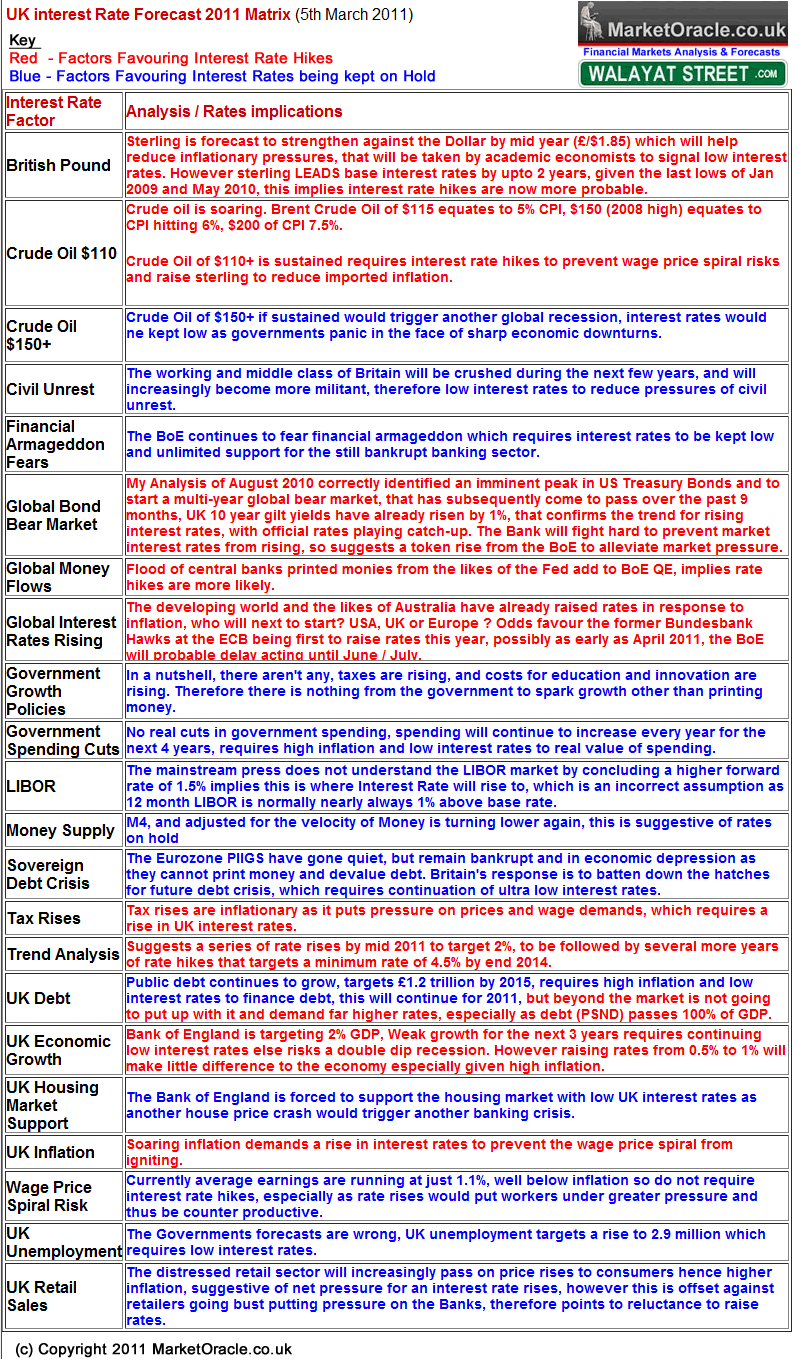
The matrix concludes in 13 factors in favour of interest rates remaining on hold against 9 factors in favour of rate hikes.
However, contrary to what many may observe as one walks the calm streets of Britain, our financial system remains on the brink of total collapse that could take place at any time as a consequence of huge loss making positions in the monster $1.5 quadrillion derivatives market. Therefore the Bank of England's primary objective remains for the prevention of financial armageddon by means of bolstering bank balance streets, which includes inflating asset prices and nominal GDP, after all everything else, including high inflation is nothing compared to the social consequences if ever bank ATM's stopped spitting out pound notes to account holders, as after a banking collapse, a collapse of civil society would fast follow. Therefore regardless of public statements, the Bank of England remains highly reluctant to raise UK Interest rates during not just 2011 but for several years more.
UK Interest Rate Forecast Conclusion
For the Bank of England to achieve its twin primary objectives of preventing financial armageddon and generating economic growth, then it needs to both print money (QE) to monetize government debt and generate easy profits for the banks to rebuild balance sheets, which requires low interest rates whilst at the same time attempting to use smoke and mirrors economic propaganda to manage the populations inflation expectations to prevent the wage price spiral from taking hold, which is suggestive of only 1 or 2 token rate hikes during 2011 to thus target 0.75% or 1% by the end 2011. Therefore the mainstream press and academic economists are running way ahead of themselves by some even suggesting that UK interest rates could hit as high as 3% this year and many more suggesting 2%.
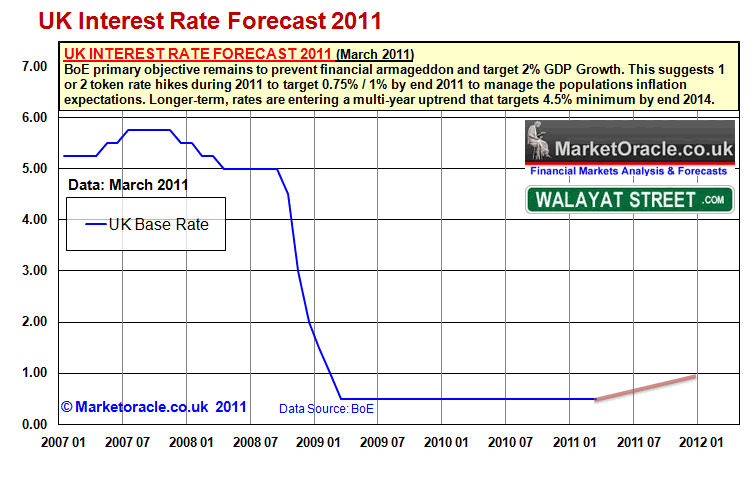
Therefore the Bank of England will both continue printing money AND raise interest rates, which confirms my conclusion of some 9 months ago that will still remain invisible to the mainstream press and academic economists right up until the point it actually happens when much rear view mirror looking commentary will flow in the press.
26 Aug 2010 - Deflation Delusion Continues as Economies Trend Towards High Inflation
What to Expect in the Future
The Bank of England WILL RAISE INTEREST RATES AND PRINT MONEY - This is contrary to anything you will hear anywhere else as the consensus view is that QE and Zero interest rates are complimentary, they will NOT be as we move forward! Because the Bank of England Will have no choice but to attempt to DEFLATE PRICES whilst INFLATING the Economy to achieve this it MUST RAISE Short-term Interest rates WHILST KEEPING LONG-TERM interest rates low. To achieve this the Bank of England needs to BUY Bonds and Stocks whilst forcing demand for consumption and wage increases lower. This WILL become the consensus view AFTER the FACT, perhaps in 6 months time ? Just as the mainstream press is ONLY NOW, 9 months on, starting to slowly wake up to the Inflation Mega-trend with the likes of the FT only coming to conclusions on the Bank of England Inflation targeting very recently, something that I came to several years ago!
FT - FT audit casts doubt on Bank’s forecasts - 9th August 2010
The forecasts used by the Bank of England to set interest rates are biased and contain little useful information, a Financial Times audit has demonstrated.
Rising Interest Rates Will be Good for the Economy
Contrary to what you may read in the mainstream press pumped out by academics and vested interests, a small rise in UK interest rates would be good for the economy because Britain's savers who for several years have had their interest funneled into the banks, will start to see this interest gradually made available to them for consumption.
When will Interest Rates Rise?
According to the mainstream press rates could rise in May, but the mainstream press is wrong 90% of the time. Two scenario's exist, the former is for an earlier April rate hike to coincide with possible ECB action. The more probable is the first rate rise to occur later in June or July as that would better time with economic data. The second more speculative rate rise will probably coincide with a rate hike from the ECB well into the second half of 2011.
Crude Oil Risks to the Forecast
As mentioned in the inflation forecast of mid January, that the key risks are that crude oil goes super nova ($150+) that sends inflation soaring to 6%, which would make Britians debt financing a problem and the market demand for higher interest rates in the order of 3%+. The subsequent freedom revolutions in the middle east have propelled crude oil (Brent) 20% higher to $110+, this if sustained will feed into higher inflation during 2011 that could see CPI above 5%, with the risks of even higher inflation later on should $150 be achieved and maintained. Whilst the consequences for crude $110 are higher interest rates, crude $150+ would be lower interest rates because it would trigger another global recession as cash is sucked out of oil consuming nations and deposited into the oil producing nations (those that have not collapsed into chaos), therefore government policy response would be to panic to generate economic activity much as occurred following the Lehman's bankruptcy.
Risk that the Bond Market will Puke on UK Sovereign Debt
To see what will eventually happen to market interest rates for British sovereign debt we need only look at the Euro-zone PIIGS, that is where Britain's future likes i.e. a doubling, then tripling of market interest rates because the Coalition Government has FAILED to HALT the accumulation of new debt (PSND), we are fast heading for public debt at 100% of GDP and beyond, and the higher the debt to GDP goes the higher will be the interest rate demanded to buy effectively British junk paper. Yes, the bond markets could puke on the relentless supply of UK debt in which case all bets are off and its off to the interest rate spike races as the only answer the Bank of England will have is to print money and buy government bonds from the puking banks.
This failure to get a grip on debt and deficits illustrates the failure of the academic economists that populate the Bank of England and offer advice to the Government to understand economics. In that as debt to GDP grows, it gradually swallows up all available financing for the corporate and business sector which contracts instead of growing. This is a recipe for economic disaster! This debt crisis is not just limited to Britain but the big monster economy across the atlantic is one step ahead of Britain on the path towards where the likes of Greece and Ireland are today and then there is Japan which is in permanent depression with debt at over 200% of GDP like a noose around it's economies neck.
The UK Interest rate Mega-trend
UK interest rate rises during 2011 will mark just the start of a multi-year mega-trend as the Bank of England always remains one step behind the economy, where indecision and failure to act will magnify future rate hikes to far beyond anything we can imagine today, therefore whilst the conclusion is for 1% by end of 2011, expect rates to continue being ratcheted higher for the next 3 years at least (remember the neutral rate should be ABOVE RPI), and I would not be surprised by UK interest rates hitting 10% during the decade, in fact, given the debt trajectory, I would not be surprised if interest rates hit 15%.
All central banks are similarly act behind the curve with rates being dragged higher behind rising inflation. Therefore the people of Britain (and rest of the West) should gear themselves up for the dawn of a new era of HIGH interest rates AND HIGH inflation, where the start of the Inflation mega-trend was correctly identified in-depth over a year ago.
Your wealth is being systematically being stolen by Inflation and dumped onto the balance sheet of the over leveraged banks, protect your wealth now from the inflation mega-trend whilst you can because you may not get much of a chance to act amidst an inflationary panic as people dump fiat currency for anything that will preserve its value (Inflation Mega-Trend Ebook FREE DOWNLOAD).
The Crushing of Britain's Middle Class
As mentioned earlier in this analysis, Britain's middle class is about to be crushed by inflation and tax rises, benefit cuts to an extent that they have not experienced during at least the past 30 years. This will undoubtedly hit those sectors hard that rely on the middle classes for commercial activity, such as the retail sector, tourism. Assets such as housing can also be expected to be hit hard, which will be covered in my next series of analysis (ensure you are subscribed to my always free newsletter to get this in your email in box). The only pause in the nightmare that the middle class face will be for 18 months or so in the run up to the May 2015 General Election, afterwards it will be more of the same pressure on real earnings, with even greater uncertainty as a consequence of the wage price spiral igniting which will act to accelerate the loss of earnings purchasing power and life time accumulated savings.
Pensions - Today there is talk about raising the retirement age to 66, in 10 years time the talk will be on raising it to 86!
Implication for Savers - Negative Real Interest Rates Continue
Firstly, continue to protect your savings from the risk of financial armageddon, which I last updated in November 2010 (Protect Savings & Deposits From Banks Going Bankrupt! ).
Secondly, realise that the stealth tax of real inflation (currently 6.6%) ensures that the value of money / cash is continuously being eroded away towards nothing in the long-run, so holding cash should be seen as temporary as one cycles between more inflation proof assets, which is especially true under the current high debt and deficit market conditions when debasement of the currency is accelerating, though masked by the fact that all currencies are in free fall against one another.
As market interest rates will lead the artificially low UK base interest rates higher, therefore the most valid response from savers is to avoid fixing rates, especially at the short end where 1 year fixed rate bonds barely beat instant access savings account rates and are well below even the official inflation rate.
As with late 2008, savers will again at some point have the upper hand to enter into multi-year fixes at rates far higher than the rate of inflation - (08 Oct 2008 - UK Interest Rate Forecast 2009 ):
Savers - To reiterate what I have been saying over the last 6 months, savers still have a a golden opportunity to lock in high fixed savings rates which in the UK are above 7% . These rates won't stay around for much longer, were talking perhaps in the days rather than weeks or months. So the time for action is now ! - Yes, banks can go bankrupt but savings are protected which includes accumulated interest. In the UK the protection is for the first £50k per banking group.
I will endeavour to again prompt savers of such opportunities once more, but unfortunately that opportunity does not appear to be visible for at least the rest of 2011. So the focus for savers must continue be to limit loss of wealth whilst maintaining risk free exposure in terms of capital.
The following analysis is of instant access savings accounts after allowing for the fact that most savers in Britain pay 20% tax on all savings interest. The table below illustrates that not one single bank or building society is paying savers a real return on the funds they have deposited in the banks instant access accounts. The real loss of value on savings is anywhere from -1.6% at the Nationwide to -3.68% with First Direct. Also many of these accounts are subject to the banking sector trick of including a bonus component that is usually limited to no more than 12 months before rates are dropped to a mere pittance of as low as 0.1%.
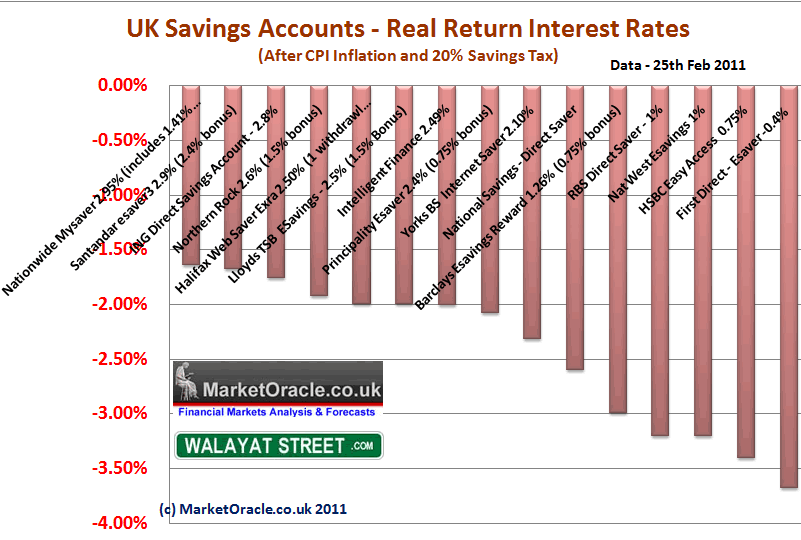
The average of market savings interest rates stands at minus -2.43%, and illustrates a continuing deterioration of the position of savers when a year ago the average real rate of interest was -1.48 as illustrated by the below graph.
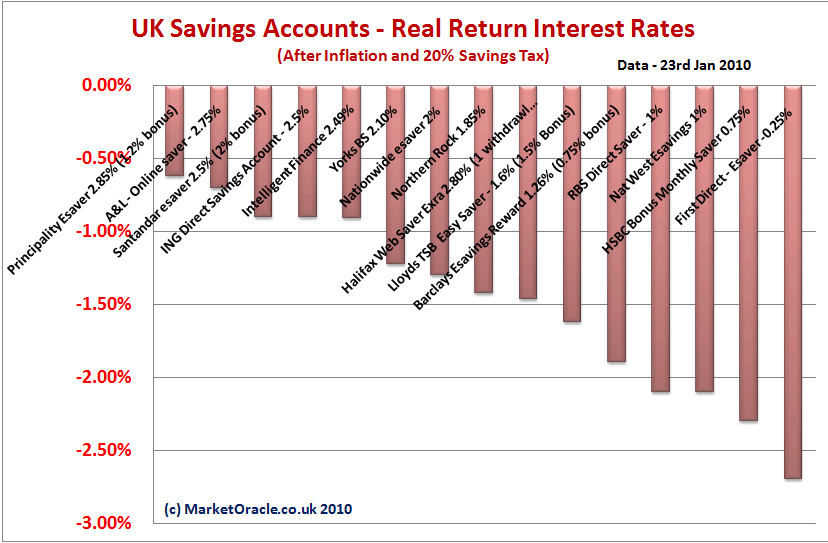
UK Savers continue to subsidise the bonus paying banks as there is NO REAL RETURN on savings. Savers require a return of 4.8% to just break even after inflation and the 20% savings tax. Therefore there is no real good news for UK savers for at least another year as the Government and Bank of England continue to force savers to subsidise the banking sector, spend their savings so as to generate economic activity, and take greater risks with their capital in the stock, bond and other higher risk asset markets.
Cash ISA's Alternative Option for Small Savers
Cash ISA's being tax free favour tax payers and are especially beneficial to higher rate tax payers. If you have already utilised this years ISA allowance of £5,100, savers should still ensure that they check the interest rates being paid on ALL of their cash ISA accounts on a regular basis, especially for those accounts that have matured as the banks and building societies are notorious for including 1 year bonuses that disappear on anniversary or dumping matured fixed rate accounts into pittance paying cash ISA accounts paying as little as 0.1%. i.e. 1/30th the rate of a typical top paying instant access account, which on an ISA account balance of £5,100 means the difference between receiving £5.10 or £153 in interest per annum.
Tricks Banks and Building Societies Play on ISA Savers
One of the biggest tricks that the banks and building societies tend to play on ISA savers is to offer a lower interest rate on ISA's than similar non ISA saving accounts, which in some cases means wiping out all of the tax free benefits of a Cash ISA account for basic rate tax payers. Yes it is highly unethical behaviour by a banking sector that tax payers are still being forced to pay for, whilst the bankster's pay themselves billions in bonuses on the basis of fictitious tax payer funded profits. However there are other benefits to ISA's in terms of tax credits and self assessment tax returns, where the interest earned is not counted.
Bond Market Investors You Have Been Warned!
If you have not already acted on my unequivocal conclusions of the past 9 months to dump long dated bonds (government and corporate) then you need to urgently revaluate your bond portfolio, as interest rate rises disproportionately hit longer dated bonds. The best strategy for bond market investors is to move towards the shorter end of the yield curve and as always steer clear of all bond funds such as the ETF's! Remember We are Now in a BOND BEAR MARKET, that will not just last a few years, but decades! So don't be seduced by any corrections in yields, as volatility will be high, and there is also increasing risks of outright default on corporate's with much speculation of US municipal bonds heading for default.
RPI Inflation Index Linked Bonds
One of my favourite low risk inflation wealth protectors, the National Savings Index Linked Certificates that gave RPI+1% TAX and RISK FREE were withdrawn from the market in July 2010. That leaves the Government Index Linked Bonds (Gilts) where the capital and interest are linked to the RPI inflation index (5%), therefore offer investors who are prepared to take on some capital value volatility, an inflation proofing yield that beats any other savings product currently on the market.
There are a number of new inflation proofing products on the market such as Bonds from Yorkshire Building Society and the Post Office (Backed by the Bank of Ireland UK). That pay RPI + 1.5% per year over a long 5 year term but there is no annual compounding of inflation or interest so it will not perform as the current rate of 5% (RPI+1.5%) implies, the actual return would be more equivalent to 5.7% Fixed Rate 5 Year Bond with annual interest compounding. Still it could be a good option for desperate savers seeking yield at a little higher risk than fixed rate bonds, as 5% RPI per year would convert into gross 32.5%.
The Post Office bond compares against the current market for a 5 year fixed rate bond at 4.5% which would gross to 24.5% after 5 years, the risk is that if inflation is lower than so will be the return be lower (deflation would be +1.5% minimum per year).
The big negative is that the interest is taxable, unlike the NS&I certificate which was tax free. There is a tax free version from the Yorkshire Building Society that utilises the cash ISA wrapper, however this version is NOT the same as that offered by the Post Office. There is NO annual 1.5% added to the bond, nor are the annual RPI rates locked in which means the product carries higher risk if deflation ever bites as in a worse case scenario you could just get a return of 1.5% after 5 years!
How does it compare to the Post Office bond ?
Utilising the same example of RPI of 5% as used for the Post Office bond, the York's ISA bond would gross 29.1% (yield 5.25%) as opposed to 32.5% (yield 5.7%), and market fixed rate bonds of 4.5% grossing to 24.5%. Clearly the Yorkshire Building Society Bond illustrates the trick of giving cash ISA savers a lower return, for basic rate tax payers the net return on the PO bond is 26% (19.5% higher rate tax payers), but the Yorkshire Bond is higher risk.
The Post Office bond is therefore the better option for non and basic rate tax payers. The York's Cash ISA Bond is better for higher rate tax payers but limited to £5,100 per tax year. As mentioned earlier the Index Linked Government stock may offer a better alternative for experienced investors (capital volatility) as you are NOT locked in for 5 years, therefore can time exits.
Also, always keep in mind the FSCS compensation limit of £85k (Euro 100,000) per banking group.
Implications for Borrowers - Mortgages
Whilst retail market interest rates will rise, unfortunately for borrowers the bankrupt bailed out banks never significantly CUT lending rates as they concentrated on expanding their profit margins to unprecedented levels. Therefore mortgage SVR's have already already been raised to 4%, this then perhaps suggests SVR rates of between 4.5% 4.75% by year end. Those seeking to fix mortgages ahead of base interest rate hikes may be shocked to discover the greedy bankster's have already put up fixed rate mortgages by 0.5% so far this year to average around 4.5% for 2 year fixes (plus fees) with more to come following actual rate hikes.
If you are considering fixing your mortgage then the time to act is NOW! Especially as the very best fixes are fast disappearing from the market place.
Tracker Mortgages
As the interest rates on fixed rate mortgages have risen, tracker mortgages have seen interest rates fall to new lows, where typically trackers for LTV 75% or less range between 2.9% to 3.5%. Mortgage providers are clearly trying to entice borrowers into products that will track interest rates higher and thus ensure profit margins on mortgages of as much as 3% are maintained no matter how high rates go.
So mortgage borrowers tempted by a current low 3% trackers need to factor in that interest rates rising to 4.5% by the end of 2014 (less than 4 years) would yield an tracker interest rate of 7.5%.
UK Housing Market Crash Phase 2?
My next series of in-depth analysis and concluding forecasts will cover the UK housing market prospects for 2011 and several years beyond, aiming to replicate the accuracy of past concluding forecasts such as - 22 Aug 2007 - UK Housing Market Crash of 2007 - 2008 and Steps to Protect Your Wealth , ensure you are subscribed to my always free newsletter to receive this in your email in-box.
In closing, 2011 interest rate rises will just be the beginning of a mega-trend, Britain and much of the west is bankrupt, they will default on debt by means of high real inflation as a consequences of printing money and monetizing debt which points to a decade of stagflation.
Comments and Source: http://www.marketoracle.co.uk/Article26766.html
By Nadeem Walayat
Copyright © 2005-2011 Marketoracle.co.uk (Market Oracle Ltd). All rights reserved.
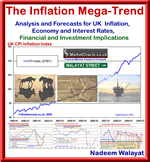 Nadeem Walayat has over 20 years experience of trading derivatives, portfolio management and analysing the financial markets, including one of few who both anticipated and Beat the 1987 Crash. Nadeem's forward looking analysis specialises on UK inflation, economy, interest rates and the housing market and he is the author of the NEW Inflation Mega-Trend ebook that can be downloaded for Free. Nadeem is the Editor of The Market Oracle, a FREE Daily Financial Markets Analysis & Forecasting online publication. We present in-depth analysis from over 600 experienced analysts on a range of views of the probable direction of the financial markets. Thus enabling our readers to arrive at an informed opinion on future market direction. http://www.marketoracle.co.uk
Nadeem Walayat has over 20 years experience of trading derivatives, portfolio management and analysing the financial markets, including one of few who both anticipated and Beat the 1987 Crash. Nadeem's forward looking analysis specialises on UK inflation, economy, interest rates and the housing market and he is the author of the NEW Inflation Mega-Trend ebook that can be downloaded for Free. Nadeem is the Editor of The Market Oracle, a FREE Daily Financial Markets Analysis & Forecasting online publication. We present in-depth analysis from over 600 experienced analysts on a range of views of the probable direction of the financial markets. Thus enabling our readers to arrive at an informed opinion on future market direction. http://www.marketoracle.co.uk
Disclaimer: The above is a matter of opinion provided for general information purposes only and is not intended as investment advice. Information and analysis above are derived from sources and utilising methods believed to be reliable, but we cannot accept responsibility for any trading losses you may incur as a result of this analysis. Individuals should consult with their personal financial advisors before engaging in any trading activities.
Nadeem Walayat Archive |
© 2005-2022 http://www.MarketOracle.co.uk - The Market Oracle is a FREE Daily Financial Markets Analysis & Forecasting online publication.




